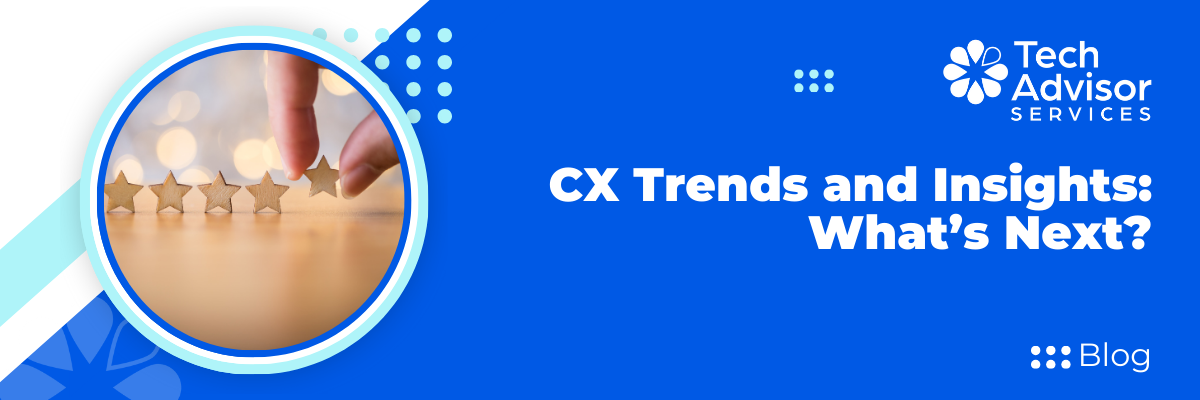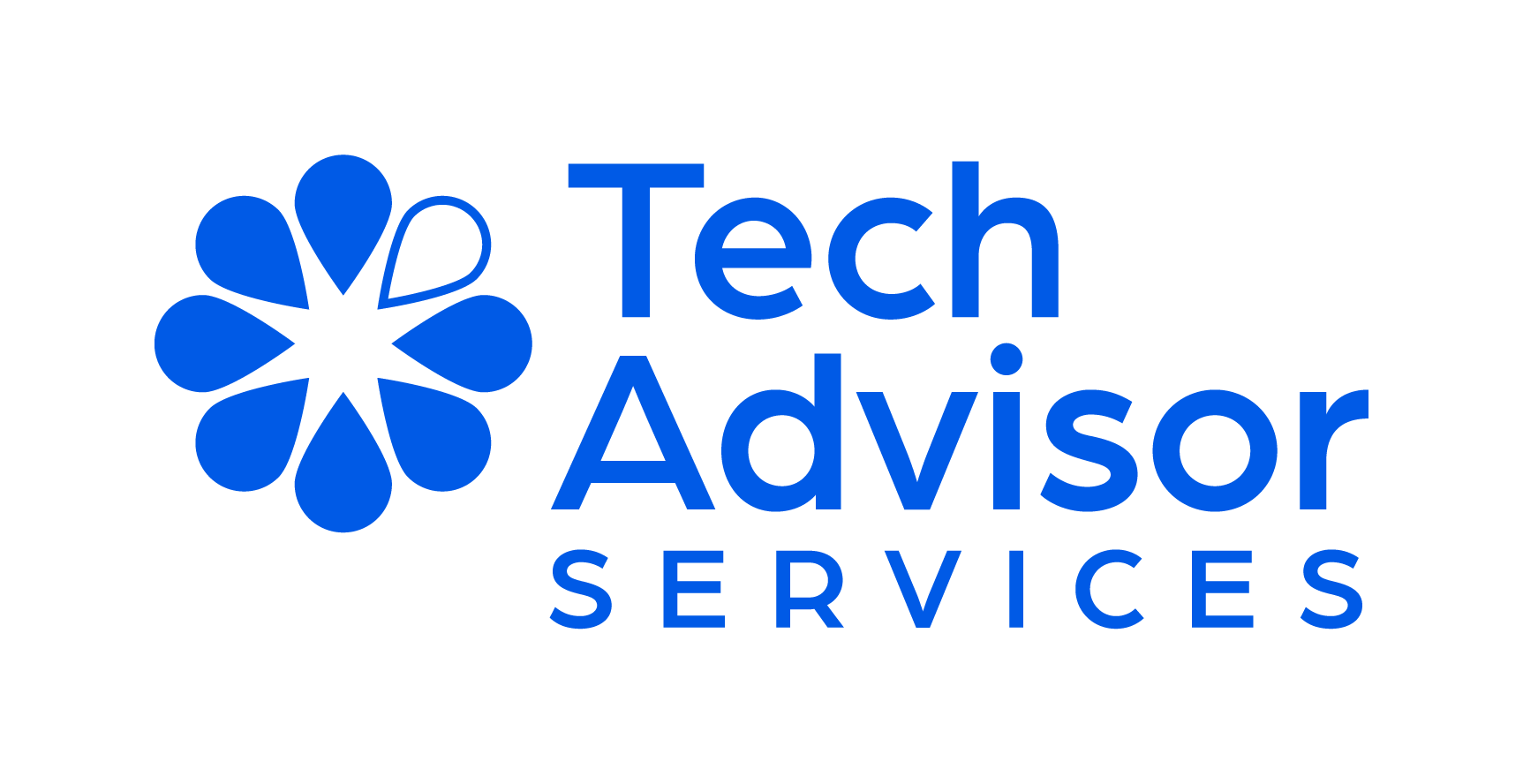New Title

Blog- CX Trends and Insights: What’s Next?
Customer experience (CX) has never been a one-and-done strategy. It evolves as quickly as customer expectations, workplace habits, and technology itself. The businesses that thrive are the ones that adapt their CX approach to reflect where people are heading, not where they’ve been.
As 2026 approaches, companies are rethinking what it means to deliver value at every touchpoint. CX isn’t just about keeping customers satisfied; it’s about creating connected, personalized experiences that drive loyalty, reduce churn, and unlock long-term growth. Technology is the critical link, and the right solutions make it possible to scale customer-first strategies in a sustainable way.
So what’s next in CX? Let’s look at the key trends and insights shaping the year ahead.
1. AI Moves From “Nice to Have” to Business Critical
Artificial intelligence in CX is no longer experimental, it’s becoming foundational. Businesses have shifted from testing AI in isolated use cases to embedding it across the customer journey.
We’re seeing AI power:
- Smarter self-service through natural language processing that understands intent and delivers accurate answers.
- Agent assistance that reduces handling times by surfacing next best actions in real time.
- Predictive analytics that forecast churn, upsell opportunities, or service demand before it happens.
The value is clear: customers get faster, more relevant support, while businesses reduce costs and improve efficiency. The challenge for 2026 is choosing platforms that balance automation with the human touch. Too much automation without empathy risks alienating customers. The sweet spot is blending AI with live agents who can step in when conversations require judgment, reassurance, or creativity.
2. Omnichannel Is the Default
Customers expect to move seamlessly from web to phone to chat to social and they don’t want to repeat themselves at every stop. In 2026, the idea of “omnichannel” isn’t innovative anymore; it’s table stakes.
The new focus is on orchestration. It’s not enough to offer multiple channels, you need to connect them so context follows the customer. If someone starts a return online and calls your contact center later, the agent should instantly see the prior interaction and move things forward without friction.
Technologies like cloud-based contact centers (CCaaS) and unified communications (UCaaS) are converging to make this possible. By housing conversations in one platform, businesses can finally give both customers and employees the connected experiences they’ve been promised for years.
3. Personalization Gets Real
For years, personalization meant adding someone’s name to an email. Customers have grown beyond that, and in 2026, they expect businesses to know who they are, what they value, and how they prefer to interact.
Personalization is shifting toward:
- Behavioral insights—serving offers, reminders, or help based on actions, not assumptions.
- Customer journey mapping that tracks the end-to-end relationship rather than isolated transactions.
- Dynamic experiences that adjust in real time, whether that’s a self-service portal that adapts to user behavior or proactive support triggered by device telemetry.
CX platforms now offer the ability to unify data across CRMs, marketing automation tools, and contact center systems, giving organizations a 360-degree view of their customers. The payoff: stronger loyalty and more revenue per customer.
4. Employee Experience Becomes CX Strategy
It’s impossible to deliver a great customer experience if your employees are struggling with outdated tools, complex processes, or siloed systems. Companies are realizing that employee experience (EX) and CX are two sides of the same coin.
In 2026, investments in CX are increasingly investments in the workforce:
- Intuitive agent desktops that reduce clicks and manual work.
- Knowledge bases with AI search that empower employees to help customers faster.
- Flexible work solutions that let employees deliver great service whether they’re in the office, remote, or hybrid.
The result is lower turnover, faster onboarding, and agents who are more focused on the customer than on wrestling with technology.
5. Digital Trust and Security Take Center Stage
Customers are becoming more conscious of how their data is used. At the same time, businesses face growing risks from cyberattacks, fraud, and regulatory requirements. CX technology in 2026 must do more than serve customers, it must protect their trust.
Expect to see:
- Stronger authentication methods that balance security with convenience, such as biometrics or frictionless multi-factor verification.
- Data minimization strategies that limit how much personal information is collected and stored.
- Transparent policies that tell customers exactly how their data is used and protected.
Security isn’t just an IT issue anymore; it’s a customer experience issue. A data breach can undo years of trust in a single incident.
6. Proactive Service Reduces Friction
Customers don’t want to contact support, they want problems solved before they happen. Proactive service is one of the fastest-growing trends for 2026.
Examples include:
- Airlines sending automatic rebooking options before passengers call.
- Subscription services alerting customers to expiring cards before billing fails.
- IoT devices flagging maintenance needs before equipment breaks down.
The technology behind this shift combines AI, data integration, and automation. When done well, proactive service not only reduces inbound call volume but also strengthens brand perception by showing customers that the business is looking out for them.
7. The Rise of Total Experience
Gartner coined the term “Total Experience” (TX) to describe the convergence of CX, EX, user experience (UX), and multi-experience (MX). The idea is simple: if you improve experiences for everyone—customers, employees, and users—you create exponential business value.
In 2026, more organizations are adopting TX strategies to break down silos. Rather than running separate initiatives for customer and employee engagement, they’re aligning technology and culture around a single goal: frictionless experiences across the board.
For many, this means consolidating platforms to reduce complexity and create consistency. A single platform for communications, workflows, and data can fuel better collaboration and better service, no matter who’s on the other end of the interaction.
8. Measuring What Matters
CX success has long been measured by metrics like Net Promoter Score (NPS) or Customer Satisfaction (CSAT). These remain useful, but businesses are realizing they don’t tell the whole story. In 2026, the focus shifts toward outcome-based metrics.
For example:
- How does CX impact revenue growth?
- How does it reduce churn?
- How does it improve employee productivity or lower service costs?
Advanced analytics now make it possible to connect CX performance directly to business results. This allows leaders to justify investments in CX technology with hard numbers and align initiatives with broader organizational goals.
9. The Value of Partnering for CX
With so many moving parts—AI, omnichannel platforms, analytics, security—no organization can master CX transformation alone. That’s why advisory partnerships are becoming more valuable.
Working with an independent technology advisor gives businesses:
- A clear view of the vendor landscape.
- Help negotiating contracts that balance cost with flexibility.
- Guidance on implementation and ongoing optimization.
The CX market is crowded, and decision-makers need unbiased insight to select solutions that align with their strategy and budget.
What This Means for 2026
The story of CX in 2026 isn’t just about technology. It’s about using the right tools to create meaningful, human connections at scale. Customers will continue to raise the bar for speed, personalization, and trust, while employees will expect tools that make their jobs easier and more fulfilling.
Businesses that embrace these trends will move past reactive service and toward transformative experiences—the kind that create
loyalty, advocacy, and long-term growth.
The takeaway is simple: CX is the competitive advantage. Reinforcing the value of your CX technologies now will position you to meet customers where they are and where they’re going in 2026 and beyond.
Ready to Reimagine CX?
Tech Advisor Services helps organizations evaluate, source, and implement the right CX technologies, from CCaaS and UCaaS to AI-driven analytics and workforce tools. If you’re looking to reimagine customer experience for 2025, we can help you build a strategy that’s as practical as it is future-focused.
